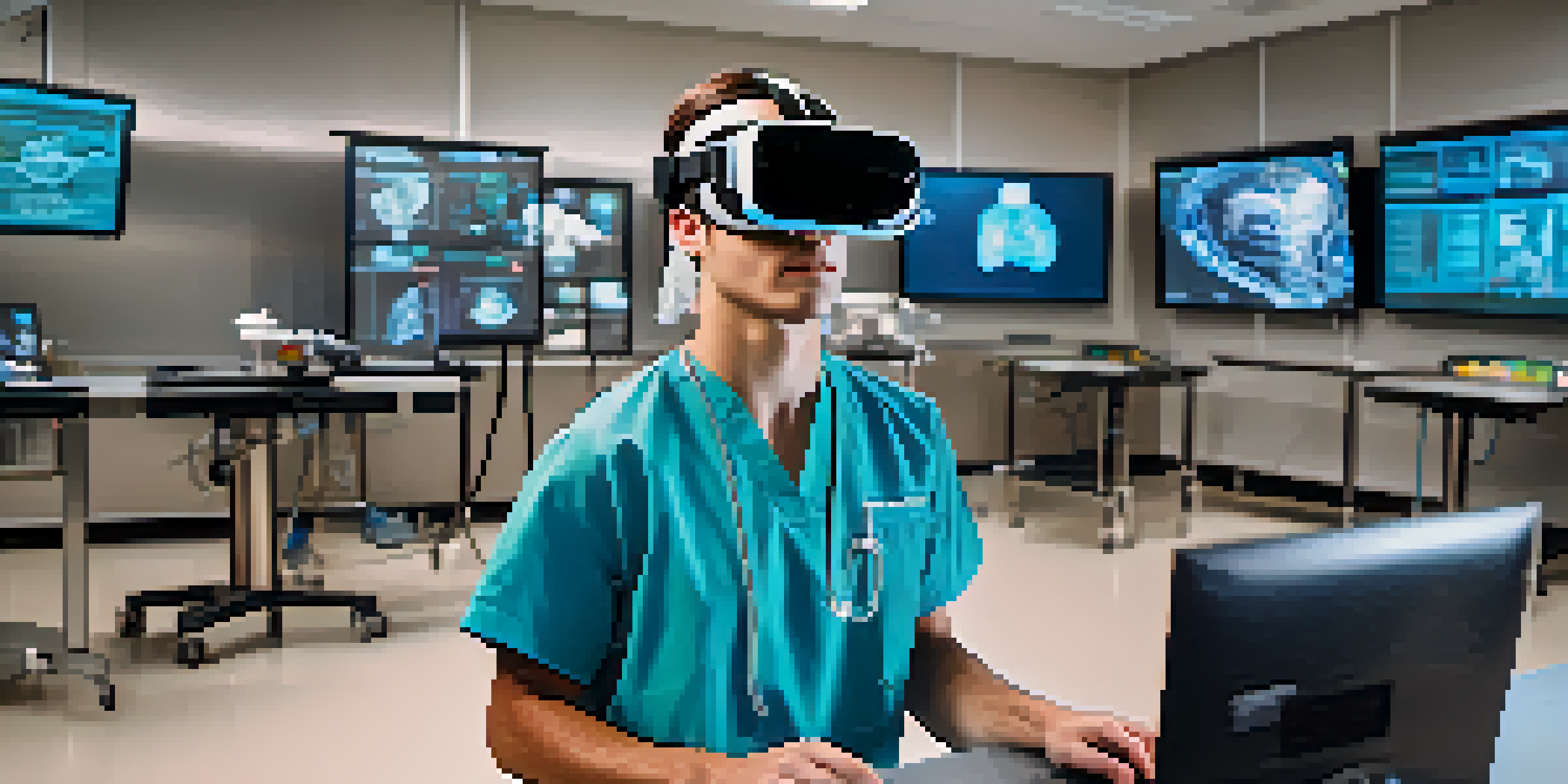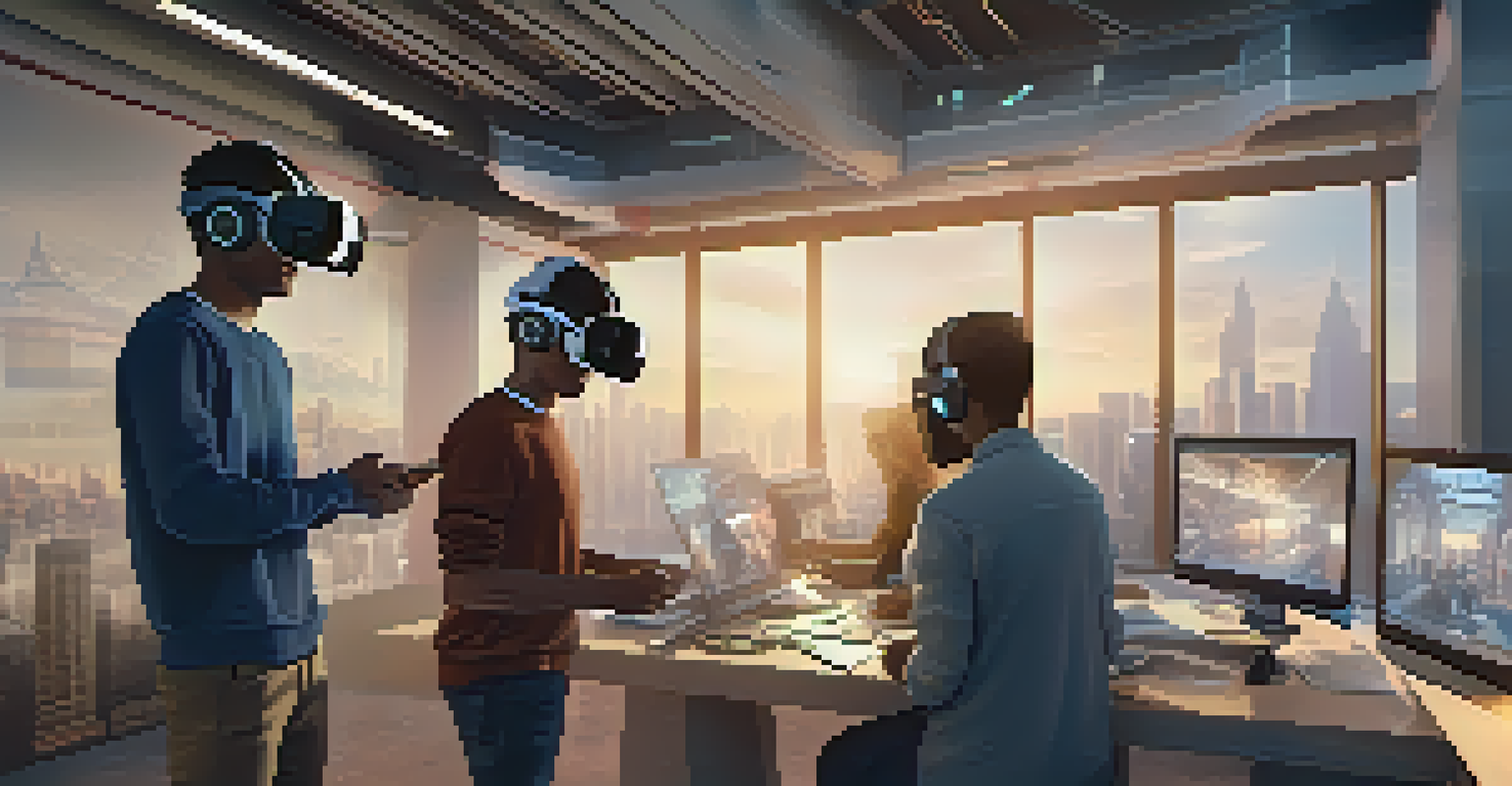Using VR to Teach Problem-Solving Skills Through Simulation

Introduction to VR and Problem-Solving Skills
Virtual Reality (VR) is transforming the way we approach education, especially in teaching complex skills like problem-solving. By immersing learners in realistic simulations, VR creates an engaging environment where they can practice and refine their abilities. This innovative technology not only makes learning more enjoyable but also allows students to experiment without the fear of real-world consequences.
Virtual reality is a powerful tool that allows us to engage in complex scenarios in safe environments, enhancing our problem-solving capabilities.
Imagine a medical student practicing surgery in a VR setting, where every cut and stitch is simulated. It’s a safe space for trial and error, enabling students to learn from their mistakes. This immersive experience enhances critical thinking and decision-making skills, which are essential in any problem-solving scenario.
As we delve deeper into this topic, we’ll explore specific applications of VR in education, the benefits it offers, and how it can revolutionize the teaching of problem-solving skills.
The Mechanics of VR Simulations
VR simulations work by creating a three-dimensional environment that users can interact with in real time. This technology uses headsets and motion sensors to track users' movements and responses, making the experience feel incredibly lifelike. Whether it's navigating a complex maze or troubleshooting a technical issue, users can practice their problem-solving skills in a controlled setting.

Consider a scenario where students are tasked with solving an engineering problem. In a VR simulation, they can manipulate virtual objects and test their designs instantly. This hands-on approach not only reinforces theoretical knowledge but also enhances practical skills that are crucial for real-world applications.
VR Enhances Problem-Solving Skills
Virtual Reality immerses learners in realistic simulations, allowing them to practice and refine critical thinking and decision-making skills in a safe environment.
The beauty of VR lies in its adaptability; simulations can be tailored to meet the specific needs of different learners, allowing for a personalized education experience that traditional methods often lack.
Benefits of VR in Problem-Solving Education
One of the greatest advantages of using VR for teaching problem-solving is the ability to simulate real-world challenges. This allows learners to face and navigate complex situations that they might encounter in their careers. By engaging with these scenarios, students develop resilience and adaptability—key traits for effective problem-solving.
The future of education lies in immersive technologies that prepare students for real-world challenges through experiential learning.
Moreover, VR promotes collaboration among learners. In many simulations, students can work together to solve problems, fostering teamwork and communication skills. This collaborative aspect mirrors real-world environments where problem-solving often requires input from others.
Additionally, VR can cater to various learning styles, ensuring that visual, auditory, and kinesthetic learners all benefit from the experience. This inclusivity makes VR a powerful tool for diverse classrooms.
Real-World Applications of VR Simulations
Various industries are already leveraging VR simulations to enhance problem-solving skills. For instance, in the field of healthcare, medical professionals use VR for surgical training, allowing them to practice intricate procedures before performing them on patients. This approach not only boosts their confidence but also significantly reduces the risk of errors during actual surgeries.
In the realm of business, companies are using VR to train employees in customer service scenarios. Employees can interact with virtual customers, honing their problem-solving skills in a safe and controlled environment. This practical training prepares them for real-life challenges they may face on the job.
Real-World Applications of VR
Industries like healthcare and business are leveraging VR simulations for training, enabling professionals to tackle complex challenges effectively before facing real-life situations.
From aviation to engineering, the applications of VR simulations are vast and varied, showcasing its potential to revolutionize training and education across multiple sectors.
Challenges of Implementing VR in Education
While the benefits of VR in teaching problem-solving skills are clear, several challenges remain. One significant hurdle is the cost of VR technology, which can be a barrier for many educational institutions. Schools and universities must weigh the investment against potential gains in student learning outcomes.
Another challenge is the need for proper training for educators. Teachers must be equipped not only with the technology but also with the skills to integrate VR into their lesson plans effectively. Without adequate training, the potential of VR may not be fully realized in the classroom.
Finally, there is the question of accessibility. Ensuring that all students have equal access to VR technology is essential to prevent widening the educational gap. Addressing these challenges will be crucial for the widespread adoption of VR in education.
Future Trends in VR and Problem-Solving Education
Looking ahead, the future of VR in teaching problem-solving skills is promising. As technology advances, we can expect more affordable and accessible VR options, making it easier for schools to adopt these tools. Additionally, the development of new software and applications will continue to enhance the learning experience.
We may also see a rise in hybrid learning environments that combine VR with traditional teaching methods. This blended approach can cater to different learning preferences and allow for a more comprehensive understanding of problem-solving concepts.
Challenges in VR Adoption
Despite its benefits, the implementation of VR in education faces hurdles such as high costs, the need for teacher training, and ensuring accessibility for all students.
Finally, ongoing research will likely provide deeper insights into the effectiveness of VR simulations, guiding educators in best practices and ensuring that VR remains a cutting-edge tool in education.
Conclusion: Embracing VR for Better Problem Solving
In conclusion, using VR to teach problem-solving skills through simulation is not just a trend; it's a transformative approach to education. By immersing learners in realistic environments, we can help them develop the critical thinking and decision-making skills necessary for success in their future careers. The benefits of VR are clear, from enhanced engagement to practical experience.
As we continue to explore the potential of VR in education, it's essential for educators, institutions, and policymakers to embrace this technology and address the challenges that come with it. By doing so, we can create a more effective and inclusive learning environment for all students.

Ultimately, the goal is to prepare learners not just to solve problems but to thrive in an ever-evolving world. With VR as a tool, the possibilities are limitless.